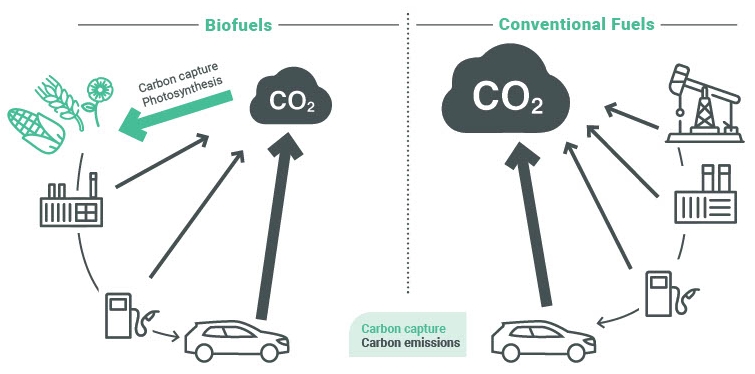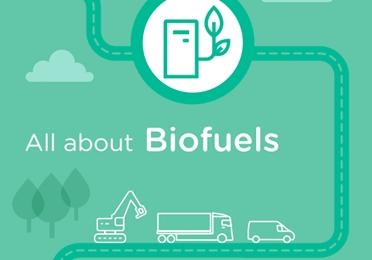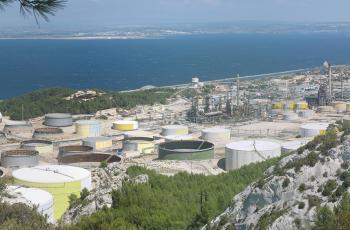
As a pioneer in biofuels, for more than 20 years TotalEnergies has been producing ethyl tert-butyl ether (ETBE), a gasoline additive, as well as hydrotreated vegetable oil (HVO), which is used for diesel. We are also Europe’s leading retailer of biofuels, with more than 2.4 million metric tons incorporated into our gasoline and diesel in 2018, and we have developed in-depth knowledge of the markets and customers.
To achieve our ambition of becoming a leader in sustainable biofuel markets, we transformed our La Mède refinery in France into a world-class biorefinery. One of the largest facilities of its kind in Europe, the biorefinery has a capacity of 500,000 tonnes of HVO-type biofuels per year, in order to continue to meet growing demand.
Learn more about La Mède: France’s first world-class biorefinery
Biofuels are made from renewable biobased materials, including vegetable oils, used oils and animal fat. There are different types of biofuels depending on the production channel:
| Biobased feedstock* |
||
| GASOLINE | Ethanol | Sugar plants |
| ETBE (Ethyl Tert-Butyl Ether) |
||
| Bionaphtha | Oilseed crops Waste** |
|
| DIESEL | FAME (Fatty Acid Methyl Ester) |
Oilseed crops Waste** |
|
HVO |
||
*Fossil-based fuels, unlike biofuels, are made essentially from fossil resources (derived from fossilized organic matter) that have been extracted from subsurface deposits. **Residues, used oils or animal fats.
Biobased feedstock most often contains oxygen. This oxygen is present in ethanol, ethyl tert-butyl ether (ETBE) and fatty acid methyl esters (FAME). As a result, these fuels have compatibility issues with conventional vehicle engines. Hydrotreated vegetable oil (HVO) and renewable naphtha, on the other hand, are obtained through a hydrogenation process that yields non-oxygenated biofuels. This makes these products, known as drop-in biofuels, easier to use and prefered by mining customers.
Production costs are higher for biofuels than for conventional fuels, so their use is primarily encouraged through regulations. These regulations can have different objectives depending on the country, ranging from fighting climate change and securing energy independence to support for farmers and land planning.
The percentage of biofuel in a product can vary depending on regulations and fuel specifications.
How are Diesel biofuels produced ?
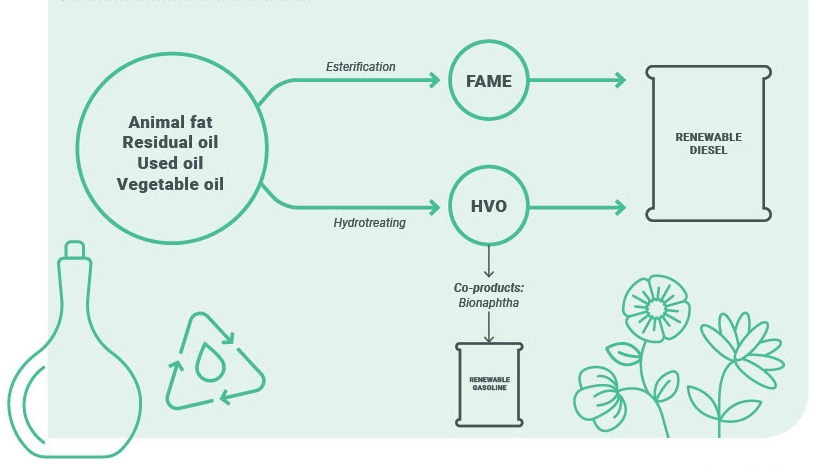
Blending HVO/FAME into diesel
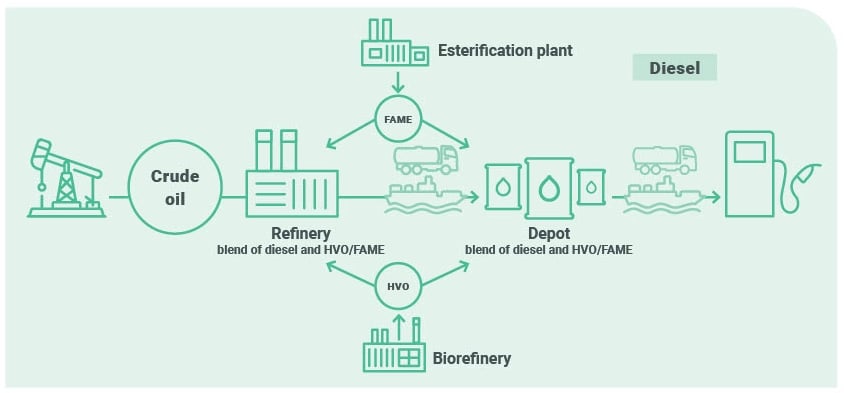
Biofuels is an integral part of TotalEnergies’strategy
TotalEnergies has set the ambition of becoming the responsible energy major.
To achieve this, we are continuing to expand in renewable energies and is building low-carbon businesses, including biofuels, into a significant proportion of our portfolio.
HVO, te biofuel that can be blended into diesel in any amount
A non-oxygenated biofuel
Hydrotreated Vegetable Oil (HVO) is made up of paraffins, the same molecules present in conventional diesel.
For this reason, a regular internal combustion engine can use HVO pure or blended into diesel.
TotalEnergies sells EN 15940-compliant HVO100 in order to provide a fully renewable alternative to diesel that is compatible with existing diesel customer logistics.
HVO’s Strengths

- No changes needed compared with conventional diesel fuel: same vehicles, same fuel delivery and
same maintenance. - Better cold start operability and storage stability than conventional diesel fuel.
- Very significant reduction (50%-90%) in carbon emissions measured over a well-to-wheel cycle.
- Reduction in local polluting emissions such as particulates and NOx.
Did you know?
We offer TOTAL HVO100 in France for our business customers’ captive fleets only, since its sale at service stations is prohibited under French law.
Impacts on carbon emissions
Unlike conventional fuels, the carbon emissions released when a biofuel is burned are offset beforehand by the carbon dioxide captured during the growing plant’s photosynthesis.
Biofuel can also be produced from wastes and residues from the circular economy, as an alternative to using agricultural resources.
